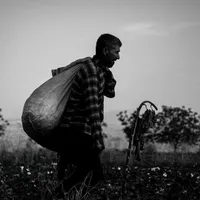The wetlands of Golestan Province -- part of the ancient Hyrcanian ecosystem -- have largely dried up amid three consecutive years of drought, poor water management, and upstream dam construction, according to environmental experts and local officials.
“This year the sky over Golestan is empty,” Tasnim quoted provincial experts as saying. “Wetlands that once hosted half a million birds have fallen silent, turning into potential dust storm hotspots.”
Meteorological data show rainfall in the province has dropped 38% below long-term averages, while temperatures have risen by 1.2°C.
The resulting “hydrological collapse,” compounded by unregulated water extraction and agricultural mismanagement, has left major wetlands -- including Gomishan, Alma Gol, Ajigol, and Alagol-- on the brink of disappearance.
“The drying of these wetlands threatens not only biodiversity but also human livelihoods,” said Mohammadreza Molla-Abbasi, a university professor. “Their ecological value is 200 times greater than farmland, yet poor governance has pushed them to the edge.”
Environmental activists say the loss of migratory species such as flamingos, pelicans and ducks reflects a deeper breakdown of natural systems. The exposed lakebeds are already producing saline dust, worsening air quality and damaging crops in surrounding communities.
“The wetlands are dying,” said AbdolhakimEdrisi, head of a Golestan environmental NGO. “Without urgent national action to restore water rights, revise farming practices and coordinate interprovincial water management, this crisis will soon turn into a humanitarian one.”
Experts warn that if the situation continues, parts of northern Iran could transform into new sources of dust storms, deepening the environmental and economic strain on one of the country’s most fertile regions.









